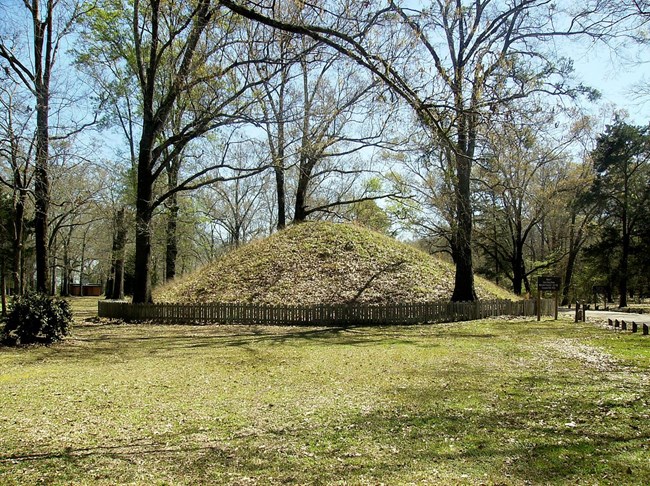Part of a series of articles titled Creative Teaching with Historic Places: Selections from CRM Vol 23 no 8 (2000).
Article
Teaching with Historic Places and Local History: A Positive Partnership

https://en.wikipedia.org/wiki/File:Marksville_State_Historic_Site_Burial_Mound.jpg
Published by the National Park Service, Cultural Resources
by Patricia L. Duncan
When the National Park Service and the National Trust for Historic Preservation joined forces in 1991 to create Teaching with Historic Places (TwHP), their goal was to make available to teachers of American history the untapped information in National Register files. Some of us feared, however, that focusing on the events of history overlooked a challenge faced by many state historic preservation offices. This issue is the need to inspire children – tomorrow’s decision makers – to appreciate and preserve the historic structures in their states. Happily, staff at the Louisiana Division of Historic Preservation believed in the TwHP approach and saw that its methodology and lesson plan format could be used to bring life to the state and local history which our historic buildings symbolize.
Although historians concern themselves with events, and preservationists with buildings, the two are often related. In addition, educators have convinced us that studying buildings in a vacuum is ineffective. It takes the history associated with those buildings, combined with the buildings themselves, to excite students. This is why TwHP and local heritage education initiatives such as our own Louisiana Studies Historic Preservation Supplement make such good partners. Our belief in this strategy was so strong that we decided to include a day-long session on TwHP in our first annual Heritage Education Institute. The Louisiana state historic preservation office presented this two-and-one-half day conference in partnership with Northwestern State University and the Louisiana Preservation Alliance in Natchitoches, Louisiana on July 31-August 2, 1996. Our goals were threefold:
- To introduce Louisiana teachers to TwHP, which was them still a fairly new initiative;
- To excite them about the possibilities of using buildings (including the approximately 900 Louisiana properties then on the National Register) as teaching tools in state and local history classes; and
- To assist educators who, for whatever reason, cannot take their students off school grounds. In place of actual field trips, teachers and children can use the information-filled TwHP lesson plans to examine issues, events, and places far from the classroom.
The presentation of the “Power of Place” slide program, found in How to Teach with Historic Places: A Technical Assistance Sourcebook, opened the Institute and captured the participants’ attention in a way nothing else could. This tool uses images of National Register properties from across the nation to illustrate the emotional and intellectual impact which sites can have on people. In our case, the script was made even more powerful by the simultaneous projection of images of Louisiana properties illustrating the same or similar themes.
In her session, Marilyn Harper of the Park Service’s National Register staff introduced the TwHP concept and materials to 46 history and social studies teachers, state park interpreters, and museum professionals from across Louisiana. “I am filled with ideas for new activities,” one teacher wrote at the end of the day. “This new vision will allow me to use the information that has always been around me (objects, buildings, neighborhoods, etc.) to create innovative lesson plans.”
The following year, as part of our second Institute, we invited Charles S. White, a co-author of Teaching with Historic Places: A Curriculum Framework. Attendees expressed frustration that their time with White was so limited.
Louisiana’s experience shows that teachers and their students are hungry for exciting approaches to history, including information about the buildings and places where events occurred. TwHP provides that approach and can strengthen any local or statewide heritage education initiative. It is our hope that many states will partner with the National Park Service to bring this important teaching tool to educators.
At the time of publication, Patricia L. Duncan was an architectural historian with the Louisiana Division of Historic Preservation.
Last updated: July 2, 2019
